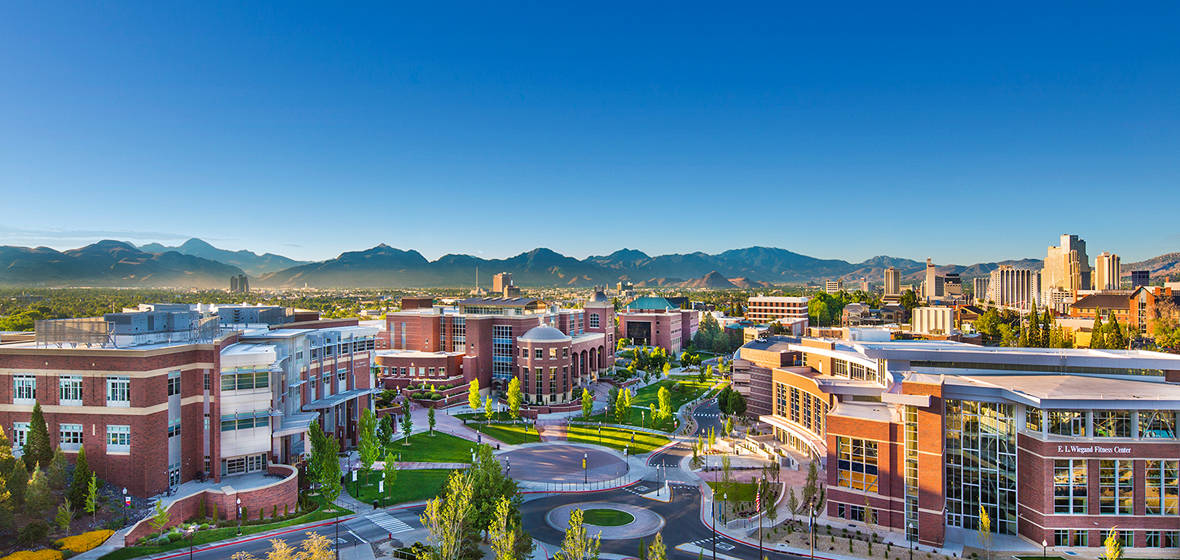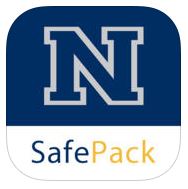Each day, the media displays the latest headlines detailing crises that occurred around the world, in our state, in our cities and sometimes, at the University of Nevada, Reno. Since institutions of higher education are not immune to crisis, emergency preparedness is an ongoing effort between multiple divisions and organizations at the University, and also with city, county, state and federal agencies.
Crises can occur in a number of forms - from naturally occurring or manmade hazards, to natural disasters, to cybersecurity or physical violence and threats - which is why the University has an all-hazards emergency management and continuity program to prepare, respond and recover from potential crises.
Prevention
While it is impossible to predict all emergencies, there are a number of safety and regulatory policies and procedures in place at the University to help prevent crises. University Environmental Health & Safety helps ensure that the University maintains or exceeds safety standards and regulations. The department offers ongoing training - both in person and online - oversees campus lab safety, occupational safety, radiation safety, waste management, industrial hygiene/indoor air quality, manages the University's chemical inventory, and more.
Preparation
"One of the most important things the University can do is to prepare for emergencies, which is an ongoing process," Amanda Windes, University manager of organizational resilience, said. "Hazards and threats change regularly. We could be 100 percent prepared today and the environment can change tomorrow. We have to be continually improving."
In her role, Windes develops University capabilities to deal with hazards. Windes works closely with EH&S, University Facilities Services, University Police Services and partner agencies in the community. From public awareness about naturally occurring disasters - earthquakes as an example - to implementing procedures and policies that keep people safe, prevention efforts at the University are ongoing.
In October 2017, all of the local fire agencies received a tour of campus and another tour is planned for later this month. Joining the tour this month will be the National Guard Civil Support Team and REMSA.
"It's important for these agencies to understand the landscape of our campus and freely be able to ask questions," Windes said. "These tours not only help agencies understand the University's needs, but they also allow for the University to build on our relationships and learn of best practices within each industry."
Windes also meets quarterly with representatives at the Washoe County Emergency Operations Center. Additionally, since the very nature of a crisis is often the immediacy in which it occurs, regular drills, planning meetings and strategy sessions are conducted throughout the year. The University has an Issues Management Team, made up of key administrators across campus, with additional members added depending on the severity of the crisis.
The IMT meets twice a year, along with University Police Services and Windes, to practice University response in times of crisis through simulated drills. These drills help evaluate the processes and protocols in place at the University and often offer the chance to expand on them.
"Everyone shows up, participates and wants to improve," Windes said. "Our leadership is actively engaged in emergency management preparation."
During a crisis or potential issue, the Issues Management Team is actively kept informed by Windes and University Police Services so they can be called upon if needed.
"The team communicates even if it's something as straightforward as a weather event," Adam Garcia, assistant vice president of University Police Services, said. "Communication with the Issues Management Team starts early, setting into motion a potential response."
All hazards standard
As part of ongoing preparedness, University Police Services train to an all-hazards standard. Whether it is a large-scale event like a basketball game, a dignitary or speaker coming to campus, or a planned protest or rally, much of the planning is similar and there are policies in place that dictate the response.
"Our No. 1 priority is to ensure the safety of our campus community," Garcia said. "In addition to our department's work to ensure the safety of those on campus, we have standing agreements with regional partners and meet with them regularly, working together to ensure response plans are in place."
With the University's growth, preparedness resources have expanded. University Police Services hired Threat Assessment Manager Kelli Nidever in 2017. In her role, Nidever assists police services with ongoing assessments and prevention efforts. She works closely with partner agencies like the Northern Nevada Intelligence Center, to understand any potential threats that are occurring nationally, regionally and locally. Along with Windes, who also joined the University in 2017, the two work with multiple agencies across the country and regularly evaluate best practices for crisis response and preparedness in a university setting.
The University is part of the Disaster Resilient Network and the Universities College Caucus, both national institutes focused on emergency management at institutions of higher education. Additionally, the University sends representatives each year to the Department of Homeland Securities National Seminar for Higher Education.
"These organizations offer ongoing dialogue, case studies, tools and tactics for the constantly changing issues universities are faced with today," Windes said.
Communication
A crucial component of emergency preparedness is communication. The campus has a number of resources in place to alert people during a crisis, which are tested twice a year. The drills are part of University Police Services' ongoing effort to educate the campus community about what people can expect during a crisis.
During the testing of the emergency preparedness systems, University Police Services activates several campus safety platforms including the outdoor notification system capable of signaling a loud audible tone or siren throughout campus in an emergency. Other emergency communication mechanisms include a text message notification; campuswide email; posting to University Police Services social media; the department's AM information radio station 1670 KHz and a scrolling banner on campus computers.
"These tests provide the applicable information our community will need during an emergency event," Assistant Chief Todd Renwick said. "Safety is always top of mind and, we want to make sure the systems we have in place work seamlessly."
In addition to University Police Services emergency alert systems, the University's Office of Marketing and Communications has representatives on the Issues Management Team and keeps a detailed crisis communications plan designed for various levels of implementation.
Response
In the event of an emergency, University Police Services would be the first to respond, however, depending on the severity of the event, the University will coordinate with a number of regional partners including the City of Reno, City of Sparks, Washoe County, Washoe County School District, Pyramid Lake Paiute Tribe, Reno-Sparks Indian Colony and more.
"The level of response needed is dictated by the policy," Chief Garcia said. "Our teams, along with our community partners, not only train for all-hazards incidents but they also have experience in them."
Should the University require a multi-agency response, the Washoe County Regional Emergency Operations Center would be activated. The REOC provides a single, secure and safe location for participating agencies to support public safety. The University would also be managing an Emergency Operation Center on campus made up of CAT members, law enforcement and outside agencies as needed.
While not every incident on campus rises to the level of a crisis, University Police Services is involved when a public safety component is needed for an event. Police services regularly meets with event organizers, laying groundwork to ensure an understanding for the event, safety and event-day expectations. University Police Services is involved with winter and spring Commencement planning and major sporting events - as examples.
Recovery
"How are you going to continue to do what you must get done every day if the environment changes?" Windes said. "Part of our planning is in the evaluation of that question to ensure operational continuity."
Windes said that the University has short- and long-term continuity plans in place. According to Windes, less than 20 percent of higher education institutions have continuity plans. As the University looks to bolster its overall plan, it is her goal to have a continuity plan within the next five years for each department at the University.
Currently, she is working with Environmental Health & Safety to revise and improve building emergency action plans. While all buildings are compliant with necessary regulations, the goal is to have consistent action plans across campus for each building. These plans will then be uploaded into the University's SafePack mobile application.
What can you do?
"Everyone on campus is a proponent of safety," Stephanie Woolf, director of University Environmental Health & Safety, said. "We encourage our campus community to be involved in the proper training for each of their areas. Training helps educate individuals, which results in a safer, helpful and efficient working and learning environment."
Download the SafePack app for iOS or Android.













